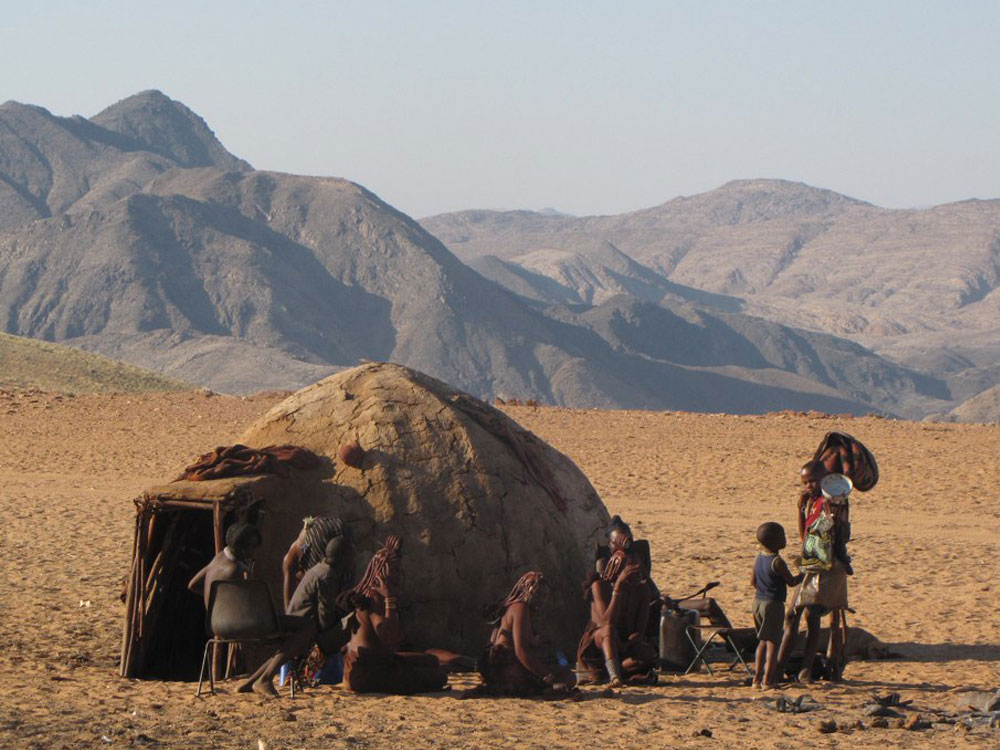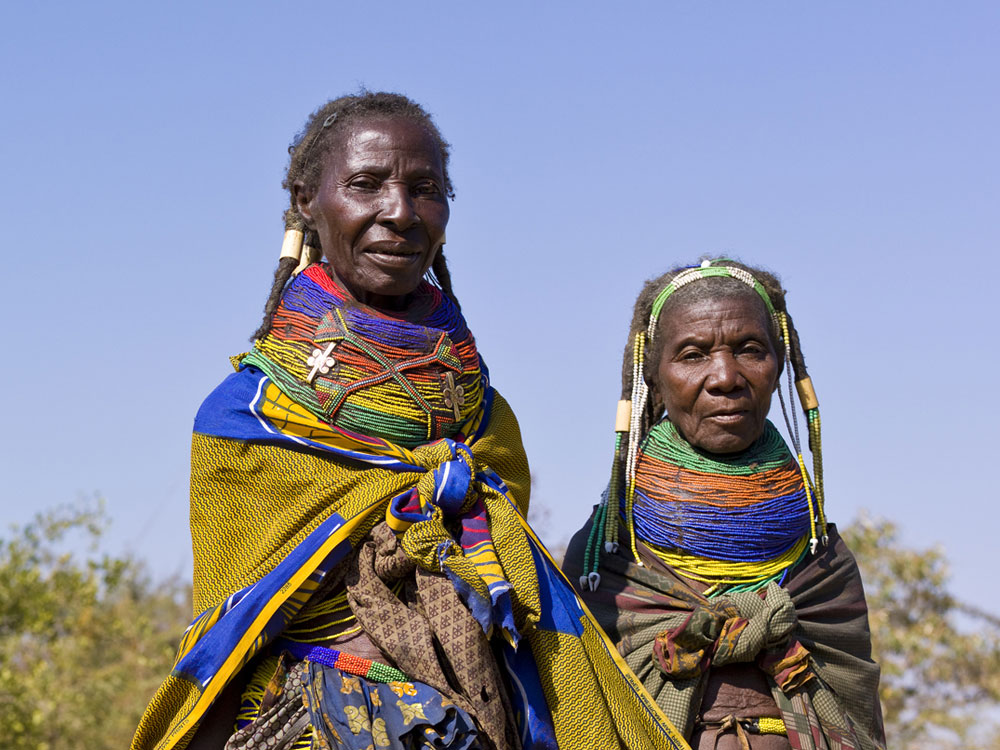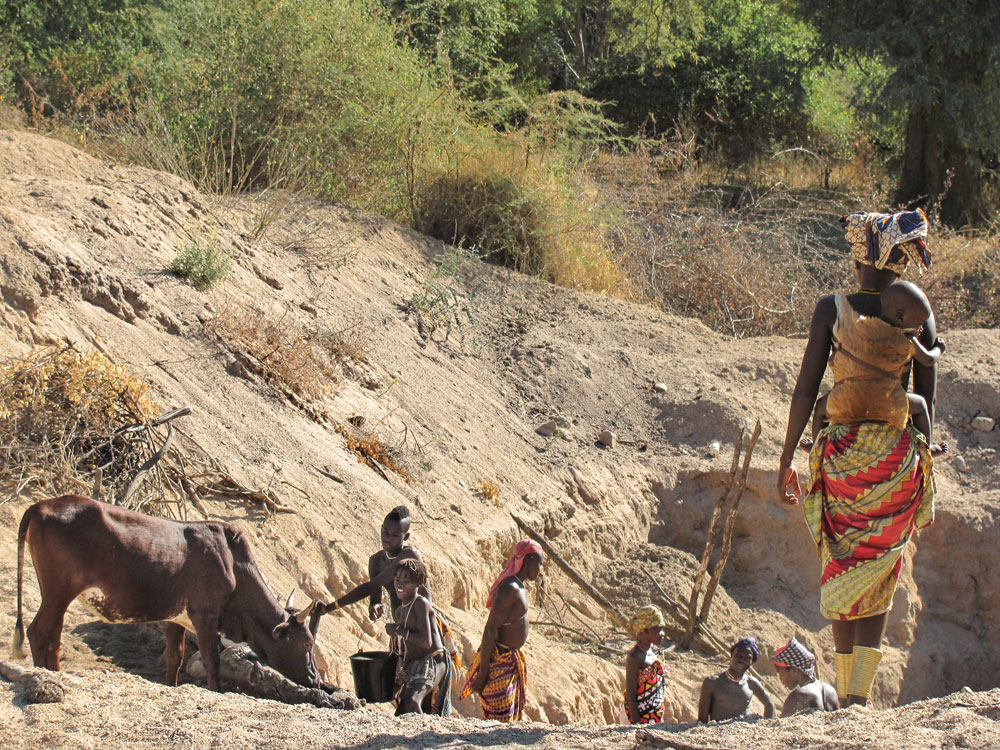Meeting Angola’s tribal groups
Kept off the tourist map by years of civil conflict, Angola is a hidden world; an utterly wild part of southern Africa that is only just opening up to tourism. Not many travelers make it here and those that do don’t come for the wildlife; that was mostly eaten or poached during the civil war. Instead, they come for the people. There are some 90 ethnic groups in Angola, many following traditional lifestyles barely changed in centuries, and living in landscapes defined by desert and mountain.
Specialist, organised tours to Angola – and there aren’t many – tend to focus on the culturally rich south of the country. The war that lasted from 1975 until 2002 didn’t impact this region, a land devoid of the oil and mineral resources over which opposing sides had so fiercely battled. This prolonged the isolated existence of the tribes living here, preventing any contact with the wider world, and inadvertently preserving their lifestyles and ancient traditions. A tour will take you to meet these tribes – in their villages, at markets – and you will often camp outside villages that rarely receive visitors.
Tribal groups in Angola

The Handa
The Handa live mainly in the provinces of Huila and Namibe, and older Handa women are famous for their intricate hairstyles and necklaces. They wear huge white beaded necklaces and beaded headdresses, and often weave white beads into their long hair, too.The Himba
This ethnic group has a large territory across southern Africa. In Angola, the Himba live in the culturally rich region around Oncocua. In common with lots of Angola’s tribes, it is the women who maintain traditional dress to a greater degree than men. They wear skirts made from animal skins, with long chains and beads hanging down, and treat their hair and bodies with a mix of butter fat and ochre, giving them a rich red tone and protecting their skin from the dry climate and from insect bites. Hairstyles denote a woman’s age and whether she’s married or not, and tend to feature thick dreadlocks coated in fat and ochre, ending in a pompom of hair. When girls reach puberty they are given a Himba crown, the erembe, made of cow or goat leather.The Mucubal
Few have heard of or visited this fascinating ethnic group. The lives of the Mucubal are based on cattle and agriculture and they preserve many interesting traditions, including teeth sharpening. Girls have their upper teeth sharpened and lower teeth removed. Elders persuade the girls to do this by convincing them that their teeth leave their mouth each night to visit a hole where people defecate and return to their mouths covered in excrement. Women also wear large headdresses, known as ompota. These are made of a wicker framework, covered in fabric and containing tied cow tails. It’s decorated with beads, buttons and shells. They wear an oyonduthi string around their breasts, too, which is used as a bra, and numerous iron anklets and armlets.The Mucubal believe in a god called Huku and worship the spirits of their ancestors. Divination is also important and they use amulets and talismans for various purposes, including protecting their cattle or preventing adultery.
The Mucuroca are a sub group of the Mucubal, and were probably one of the first Bantu groups to arrive in the desert of southern Angola in the 18th century. They met the Mucuis people here – another tribal group – and intermarried.

The Muila
The Muila (also Mwela, Mumuila or Mumuhuila) are semi nomadic tribe, living on the Huila Plateau. The women are famous for their ornate hairstyles, featuring thick nontombi mud-coated dreadlocks. They use a red stone call oncula to make a paste, mixed with oil, butter, tree bark and herbs; some even use dung. This is then embellished with shells, beads and even dried foods. The number of nontombi that a woman has is significant. Girls have four or six, but three denotes someone has died in the family. Muila women also wear mud necklaces, made in various styles, each one corresponding to a life stage. Young girls wear heavy red necklaces encrusted with beads; older girls wear yellow necklaces made of wicker covered with earth, called vikeka; and women who are married wear a set of stacked up necklaces encased in hard mud, called vilanda. They never take this off, not even to sleep.The Mutua
Another tribal group living in the remote lands near Oncocua, the Mutua live in small settlements and rather than owning livestock, rely on honey and fruit gathering. They are considered lower caste by other neighbouring tribes and, while resembling the Himba, generally have less elaborate hairstyles and dress.The Mucawana
The Mucawana people inhabit the remote regions near Oncocua. They are subsistence farmers with a lively culture, in which partying plays an important part, and people gather to play music and clap. Women dress their hair with a mix of cow dung, fat and herbs for fragrance, with beads, shells and coloured bands woven through. Women also wear bright fabrics, and beaded necklaces and bracelets, which sometimes feature Teutonic-looking crosses.Our top trip
Angola safari vacation
Unique safari taking in Angola's remote national parks
From
£10450 to £11495
15 days
ex flights
Small group travel:
2024: 20 Aug
2025: 13 Jul
2024: 20 Aug
2025: 13 Jul
Travel Team
If you'd like to chat about Angola or need help finding a vacation to suit you we're very happy to help.
1-866-821-6866
Call toll free
Calling from outside the USA
Traveling sensitively in Angola

When visiting remote tribal groups like those in Angola, a huge amount of sensitivity is required. The delicate balancing act that any travel here must strike is between learning about these isolated and unusual cultures, but in a way that is fair and non-exploitative. Many of the tribespeople here have had little contact with western travelers – or indeed anyone much beyond their tribe or neighbouring tribes. Responsible tourism is crucial.
Southern Angola is so far off the tourist trail that only a handful of operators lead trips here. They will have built up relationships with the local tribespeople, so that both they and the visiting travelers get something from the encounter. Guides are local to the south of Angola but not to the tribal groups visited. Usually, someone in the tribes can speak a little Portuguese and act as a translator between the languages. Tour operators also operate strict guidelines for travel, in an effort to respect local people and life; the very thing travelers come to see. Responsibility lies with the traveler, too. While the cost and effort of visiting Angola and its remoteness naturally filters out the flippant visitor, some people will be motivated to come simply to photograph tribal groups and run the risk of objectifying them. Of course, on a 10 day visit, you don’t have time to engage deeply with local people, but you do have a duty to behave responsibly and should be here because you’re genuinely interested in the lifestyles and deep traditions of these people, and not because you simply want to bag some impressive photos.
Tourism plays an uneasy role in tribal culture – it is an outside influence, but one that often rewards tribes financially for staying as they are. In more visited parts of the world, tourism has led to tribes ‘playing up’ parts of their culture for tourism, in ways that may not always be beneficial to the community as a whole. It is important that tourism money gives tribes options and agency rather than indebting them to systems and ways of living that don’t work for their communities.
Southern Angola is so far off the tourist trail that only a handful of operators lead trips here. They will have built up relationships with the local tribespeople, so that both they and the visiting travelers get something from the encounter. Guides are local to the south of Angola but not to the tribal groups visited. Usually, someone in the tribes can speak a little Portuguese and act as a translator between the languages. Tour operators also operate strict guidelines for travel, in an effort to respect local people and life; the very thing travelers come to see. Responsibility lies with the traveler, too. While the cost and effort of visiting Angola and its remoteness naturally filters out the flippant visitor, some people will be motivated to come simply to photograph tribal groups and run the risk of objectifying them. Of course, on a 10 day visit, you don’t have time to engage deeply with local people, but you do have a duty to behave responsibly and should be here because you’re genuinely interested in the lifestyles and deep traditions of these people, and not because you simply want to bag some impressive photos.
Tourism plays an uneasy role in tribal culture – it is an outside influence, but one that often rewards tribes financially for staying as they are. In more visited parts of the world, tourism has led to tribes ‘playing up’ parts of their culture for tourism, in ways that may not always be beneficial to the community as a whole. It is important that tourism money gives tribes options and agency rather than indebting them to systems and ways of living that don’t work for their communities.
Jim O’Brien, from Native Eye, our only tour operator to travel to Angola, explains more:
“Unless you spend a long time in a community I think genuine engagement is very difficult, and of course if you are just spending an afternoon or a day there it can be challenge to be anything more than temporary visitors. However, we issue strict guidelines about how to behave when visiting tribal groups and ask our guides to enforce them, so that it doesn’t feel like a human safari and is instead more sensitive.”
“Unless you spend a long time in a community I think genuine engagement is very difficult, and of course if you are just spending an afternoon or a day there it can be challenge to be anything more than temporary visitors. However, we issue strict guidelines about how to behave when visiting tribal groups and ask our guides to enforce them, so that it doesn’t feel like a human safari and is instead more sensitive.”










